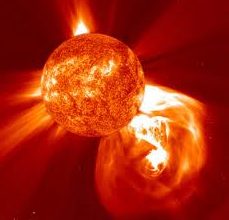Image: Shutterstock
What’s New: An opinion piece from the Washington Post editorial board. It talks about the danger of severe solar activity and the need to prepare.
Why It’s Important: The need to prepare. People and their governments have a hard time preparing for and acting to prevent or mitigate rare events. Think about:
- The 9-11 attacks on the twin towers and Pentagon. – Globally, over 140 commercial aircraft had been hijacked before then.
- Hurricane Katrina – Folks knew for decades the levees wouldn’t hold in a big storm like that.
- The Texas winter power grid failure – There were all kinds of warnings and reports beforehand.
- The Francis Scott Key Bridge in Baltimore – It wasn’t the first bridge to get hit and damaged.
We could go on all day…
What Else to Know:
- The article doesn’t talk much about GPS. Depending on the type of solar event, impacts on GPS could range from negligible to disastrous.
- What are the chances? How lucky do you feel? What are you willing to risk?
- More info in our earlier posts. See for example “Is the Sun Our Biggest Enemy in Space?”
The link below includes great multi-media including really great video and animations.

The next global crisis could come from the sun. We should prepare now.
Total blackouts, radios gone haywire, an internet implosion — do these hallmarks of doomsday and disaster movies stand any earthly chance of happening? Turns out, that might be the wrong question. One of the greatest threats to global infrastructure comes from the sun.
When we talk about weather, we generally mean snowfall, high winds or simply a light drizzle. But space has weather, too, and that weather includes storms. The sun is the stormiest spot in the solar system, a big ball of roiling plasma with an erratic rotation. The lines of the sun’s magnetic field are constantly moving. The images below, developed by NASA, show a period of intense solar activity a decade ago. They illustrate how magnetic fields shift:


